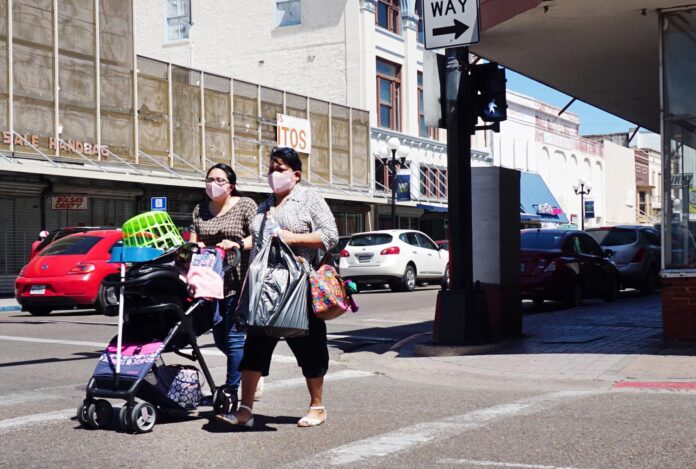State and local governments across the nation have taken a financial beating in many cases dealing with the COVID-19 pandemic over the past year.
At the same time, the federal relief packages aimed at helping the country as a whole attached strings to money allocated to local governments. It could only be spent on costs directly related to combating the pandemic — the purchase of personal protective equipment or overtime for emergency personnel, for instance.
However, the $1.9 trillion American Rescue Plan the House passed on Feb. 27 includes substantial funding for state and local governments, territories and tribes appears to be largely unrestricted compared to the CARES Act, which passed last year.
The ARP includes $350 billion for local governments. Cameron County’s share under the House bill is more than $82 million, while the city of Brownsville would receive $67.7 million, Harlingen $22.1 million and San Benito $9.6 million. Jurisdictions with populations of 50,000 and up would receive the funds directly from Treasury. Those with fewer than 50,000 would have their funds distributed by the state.
Los Fresnos would receive $1.7 million through the state, La Feria nearly $1.6 million and Port Isabel almost $1.4 million.
As with the CARES Act, though, the Treasury Department will be responsible for promulgating specific rules on how ARP money can be spent. That said, the wording of the new bill on how the funds can be used seems to allow for a broader interpretation compared to the CARES Act.
The ARP provisions under the heading Coronavirus Local Fiscal Recovery Fund allow for the money to be spent to “address the negative economic impacts” of the pandemic in addition to more specific language on replacing lost or delayed revenue, recovering costs incurred directly due to the emergency and so on. The wording of the CARES Act’s Coronavirus Relief Fund provision did not leave room for such flexibility.
“It seems a little broader than the CARES Act,” said U.S. Rep. Filemon Vela Jr. “That tells me you can really ramp up programs for small businesses that may not otherwise have access to relief.”
The bill still has to be approved by the Senate, where Democrats hold a razor-thin majority, though Vela thinks it’s likely this portion of the House bill will survive intact and be part of the legislation that winds up on the president’s desk later this month.
“I’m pretty confident that the Senate is going to pass this,” Vela said. “The two Democrats that you have to keep an eye on are Joe Manchin from West Virginia and Kyrsten Sinema from Arizona, and I have not heard them speak against state and local funding, and I don’t anticipate they will.
“West Virginia is one of the poorest states in the country. All the counties and towns in West Virginia and Arizona really could use this boost, so I’m pretty damn sure the Senate is going to pass the package in its current form with maybe a few changes. We’ll know more by the end of the week.”
Cameron County Judge Eddie Trevino Jr. said that if the money comes through he hopes it can be used for things like closing the county’s broad-band connectivity gap for the sake of educating children, offer mortgage relief to beleaguered homeowners and assistance to small businesses, as well as costs more directly tied to the pandemic. He said the COVID-19 crisis has been “very detrimental to our budget and our revenue side.”
“It would be a godsend, a huge investment in our community,” Trevino said.
The county would seek input from all the mayors, commissioners and community leaders on how to spend the money, if indeed it comes through, he said.
“You know what they say, don’t count your chickens before they’re hatched,” Trevino said.
Brownsville Mayor Trey Mendez agreed “it’s too soon to start counting chickens,” but said the city has had initial discussions on how to spend the $67.7 million potentially coming Brownsville’s way.
“We have some thoughts on what we may do,” he said. “It’s a substantial amount of money, certainly something that we could definitely use. Brownsville’s got a lot of needs and we need to prioritize those needs and really address them. … If it does come to fruition it’s going to be probably a little bit more than half of our operating budget, so it’s very, very important for us to get that if we can.”
Mendez said he hopes the money can be used to make a “better Brownsville moving forward” in addition to addressing the direct financial impact from the pandemic.
“We’ve got a lot of capital improvement projects pending, a lot of you could say game-changing projects for the city that are in queue, that we’re waiting on and that we’ve been planning for,” he said. “It’s going to take a little bit of time when and if we do get that funding to determine how best to spend it, but I can assure you that however it is spent it’s going to be in the best interests of our citizens.”




